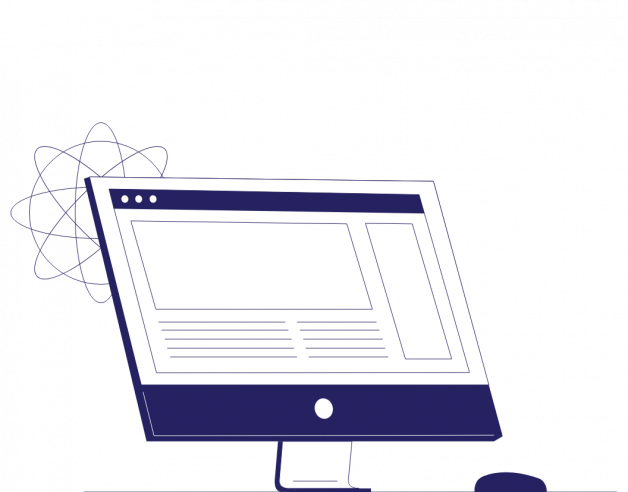
-
5-minute read
-
7th May 2023
Character Backstory Template for Authors
Characters serve as the heart and soul of any story. No matter how captivating the plot, the story may fall flat if your characters aren’t believable.
Creating well-rounded and compelling characters can be a challenging yet rewarding process. To assist you in this endeavor, we have developed a character backstory template and a step-by-step guide that will help you breathe life into your fictional creations.
In this blog post, we’ll unlock the secrets of character development and the craft of writing memorable personalities.

What Is Backstory?
Backstory refers to the history and experiences of a character that occur prior to the start of your narrative. A character’s past can be revealed in different ways: fleshed out in a scene – this is known as a flashback – or just mentioned in passing.
It’s crucial to strike a balance when sharing backstory. Too many details can overwhelm your reader, and too little can leave characters feeling underdeveloped. As you develop your story, you’ll find the right amount of backstory to include and the pace at which to share it.
Regardless of whether a particular detail will make it onto the page, it’s important for you, the writer, to have a comprehensive understanding of your character’s backstory, as it will inform what happens in your narrative.
To help you organize important character details, we’ve created a character backstory template, which you’ll find below.
How To Use the Character Backstory Template
1. Character Sketch
In this section of the template, you’ll enter your character’s name and basic biographical details. This is a snapshot of your character as they first appear in your story.
A basic sketch is helpful for any kind of story you’re working on, but you might pay additional attention to certain aspects of your character depending on the genre or focus of your work.
As an example, if you’re outlining the backstory of a character who moves from Lagos to Mexico City, you might highlight the fact that they have lived at their apartment in the Condesa neighborhood for only a week.
2. Personality and Relationships
Now that you’ve laid the foundation with your character’s basic biography, it’s time to venture into the depths of their character. Because, let’s face it, what makes people captivating and compelling goes beyond their appearance; it’s in their relationships with other people, their dreams and desires, and their distinct perspectives of the world around them.
The same goes for your fictional characters.
Conflict lies at the heart of a good story, so you need to understand how each of your character’s goals relate to the central conflict of your story.
Find this useful?
Subscribe to our newsletter and get writing tips from our editors straight to your inbox.
Subscribe to Beyond the Margins and get your monthly fix of editorial strategy, workflow tips, and real-world examples from content leaders.
Let’s imagine you’re crafting a narrative about a woman who defies her parents’ wishes by pursuing a career in the restaurant industry:
· Her external goal is to become a world-renowned chef, driven by her internal aspiration to honor her grandmother’s memory by spreading love through her culinary creations.
· On the other hand, in the character profiles of her parents, you might note that their external goal is to persuade their daughter to abandon her restaurant ambitions.
This will give rise to a noticeable tension caused by their clashing goals, serving as the central conflict of the story.
However, you might also note here the parents’ shared internal goal to shield their daughter from the hardships a relative endured when they attempted to enter the restaurant industry.
3. Notes
In this section, you can write down anything that you think might be important for building the character.
This might include key plot points in their backstory, specific flashbacks you want to remember to include in your narrative, and any smaller events that have shaped the character.
Allow Space for Growth
While using a character backstory template, such as the one we’ve provided, can be immensely valuable to you as a writer, it’s important not to adhere to it too rigidly.
As you work on your story, you might find that your character takes on a life of their own and does something that seems contrary to the personality traits you’ve listed on your sheet. Before you rewrite your story to stick to the profile, consider this: has your character grown or changed?
The most engaging characters not only move the plot forward but also go on an internal journey – this is known as a character arc. Consider how events in your story might have impacted your character. Perhaps it’s completely fine – or even the whole point – that, by the time you reach the end, they no longer look like the person you once knew.
Conclusion
While our character backstory template will be most obviously useful for fiction writers, it can also be helpful if you’re writing narrative nonfiction. While narrative nonfiction is based on actual events and people, it still relies heavily on the same storytelling techniques as fiction, and readers are looking for narrative and character arcs in any kind of story they consume.
Try filling out the template for your characters the next time you write a story. And if you want someone to review your narrative once your draft is done, you can submit it to our professional team of editors for meticulous proofreading and helpful editorial suggestions. Try out our services for free today.




